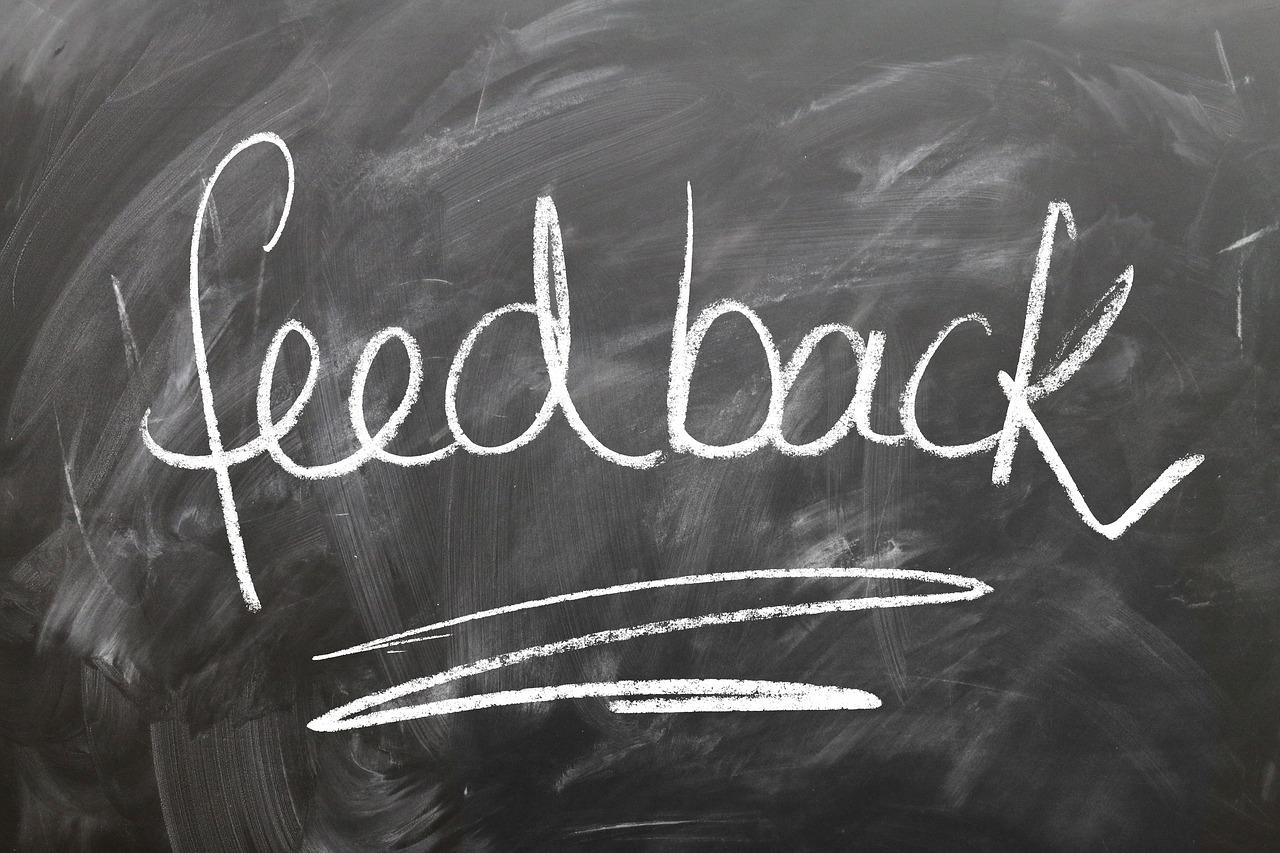
Best Practices for Closing the Customer Feedback Loop
Every customer-centric company wants to build a smooth experience for their customers to improve customer satisfaction, delight users, and differentiate your company from the competition. Customer feedback plays a central role in this.
However, merely collecting customer feedback is not enough. You need to respond and act on it. Many companies miss out on essential aspects of closing the customer feedback loop, missing out on loyal customers and continued valuable feedback from customers.
What is the importance of closing a feedback loop, and what are the best ways? We’ll walk you through some practical tips with feedback loop examples.
What is a Customer Feedback Loop?
Companies get customer feedback from different sources, such as support tickets, slack channels, surveys, and feedback portals. Conversations with internal and customer-facing teams, such as the support and sales teams, occur daily.
When does this information dump turn into powerful insights that inspire action across the company and support overall product growth? It’s when you close the customer feedback loop.
A customer feedback loop is a process of aggregating customer feedback, deriving meaningful insights, taking action, and responding to customers with updates.
The concept behind closing a customer feedback loop is to improve customer satisfaction. Surveys like NPS, CSAT, CES, market research, and voice of the customer programs help a lot. But as a customer-centric business, you must ensure that your customers understand their feedback is valued and heard by the company.
At companies where strong customer feedback systems take hold, business leaders and employees start to own customer loyalty the same way they own their targets for revenue, profits, and market share. -HBR
Why is the Closing the Customer Feedback Loop Important?
According to a report by Salesforce, 66% of customers expect companies to understand their needs and expectations. The significant benefits of capturing customer feedback include:
- Understand your customers: Customer feedback loops help build customer engagement and understand their product expectations.
- Increase customer satisfaction: Closing a feedback loop tells your customers you listen and care about their needs.
- Reduce customer churn: User feedback loops help customers feel appreciated and heard, increasing their trust and providing a churn collateral process.
- Build healthy customer relationships: Feedback loops help create long-lasting client/ customer relationships, and reduce customer complaints.
- Identify bugs and new features: Feedback loops also help identify the commonly faced issues and track bugs by the customers to improve your products and services.
Closed-loop Feedback is complete with — personalized follow-up communication, letting them know their insights are acknowledged and acted upon along with the new updates. Let us now look at examples of ideal customer feedback loops.
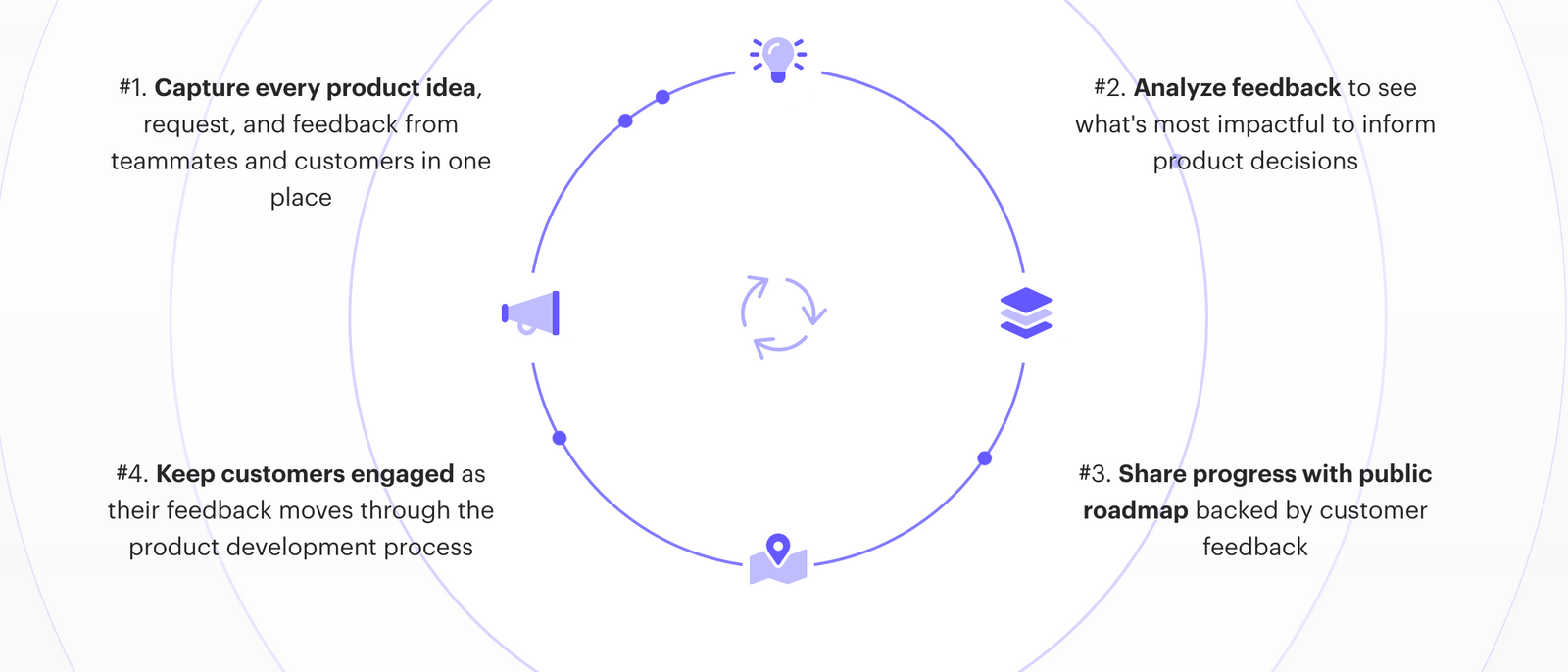
Steps of Closing the Customer Feedback Loop
Closing the customer feedback loop is vital in ensuring customer opinions and suggestions are heard and acted upon. Here are steps to effectively close the feedback loop:
1. Gather Feedback: Collect customer feedback through various methods, including surveys, reviews, direct communications, and social media mentions.
2. Analyze and Prioritize Feedback: Sort the feedback into feature requests, bugs, product feedback, service-related, etc. Analyze the feedback to identify common themes, trends, and potential areas for improvement and provide new ideas.
3. Develop an Action Plan and Implement Changes: Based on the feedback analysis, prioritize actions to address the most critical issues or those that can significantly impact customer satisfaction. Develop a plan outlining the steps necessary to address the feedback, including assigning responsibilities and setting timelines. Implement the changes or improvements based on the action plan developed and maintain the progress in a public roadmap.
4. Communicate and follow up with Customers and Teammates: Communicate the feedback and action plans internally to ensure all relevant departments and teams are aware and aligned. Inform the customers about the release of new features or updates based on their feedback, showing their opinions are valued and taken seriously. Follow up with customers to inform them of the changes made based on their feedback and to gather their opinions on the improvements.

7. Close the Product Feedback Loop: Officially close the feedback loop by notifying customers that their feedback has been fully addressed and thanking them for their input. Closing the feedback loop is a cyclical process, and the goal is to continually engage with customers and make improvements based on their feedback for sustained customer satisfaction and business growth.
Examples of Customer Feedback Loops
A feedback loop involves customers and internal team members. To better understand the process and how they are co-related, let's see examples of companies closing the customer feedback loop:
Amazon - Product Reviews and Q&A
- Feedback Gathering: Customers leave reviews and ask questions about products on the product page.
- Analysis and Action: Amazon and sellers on the platform monitor these reviews and questions, sometimes making improvements or adjustments based on feedback. Amazon shows that valuing customer experience and listening to customer feedback is why customers keep coming back to them.
- Communication: Sellers and sometimes Amazon representatives directly reply to reviews and questions on the product page to address concerns and provide information, closing the product feedback loop.
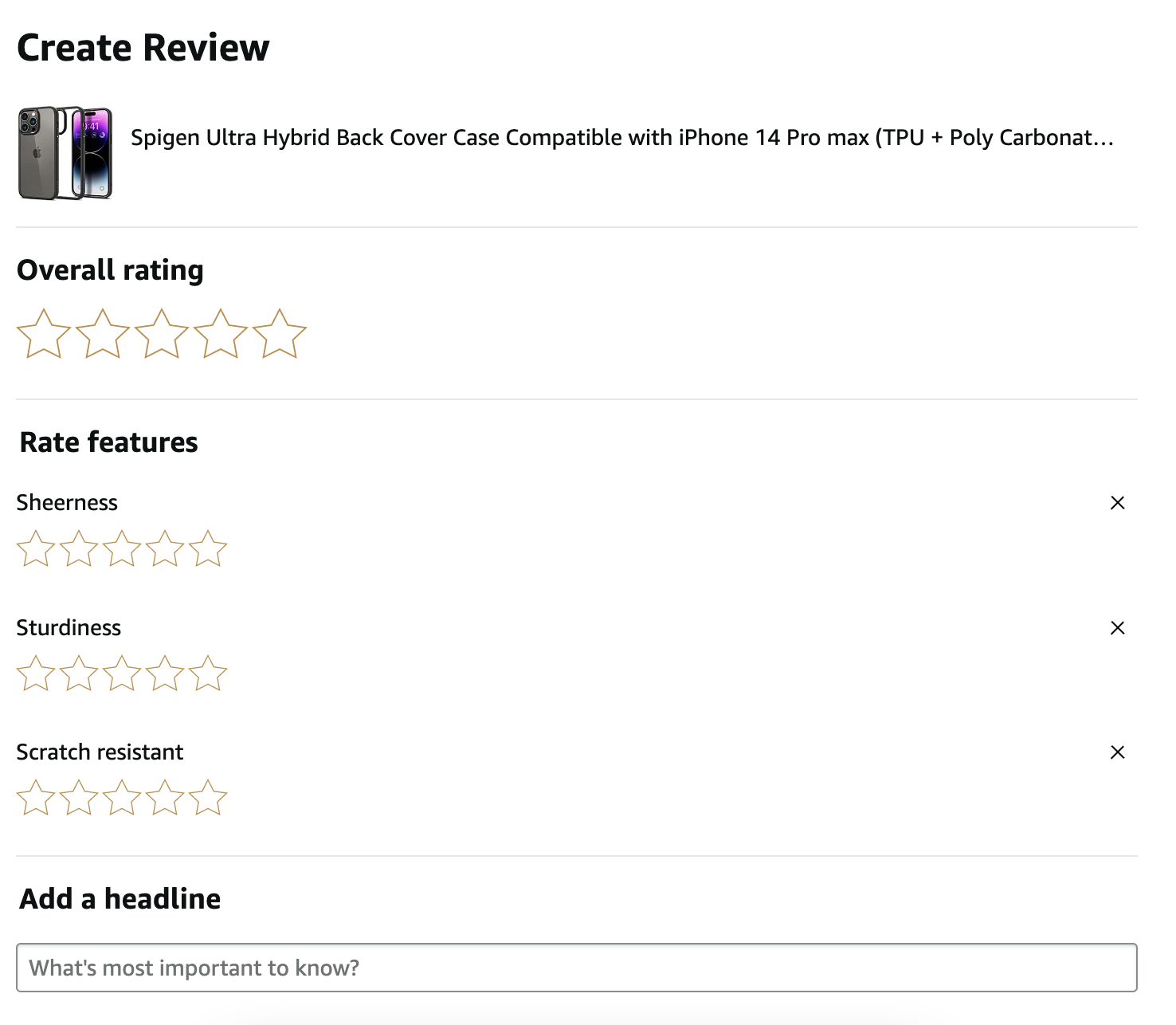
Apple - Beta Software Program
- Feedback Gathering: Apple allows users to test pre-release versions of its software through its Beta Software Program. Apple uses various ways to collect user feedback, including product feedback, website feedback, and support tickets.
- Analysis and Action: Users provide feedback on bugs and potential improvements, which Apple analyzes to enhance the software before the official release.
- Communication: Apple often implements suggested improvements and bug fixes in subsequent beta or final releases, and communicates these updates through release notes and announcements. Apple's dedication to closing the customer feedback loop shows that being customer-centric leads to success.
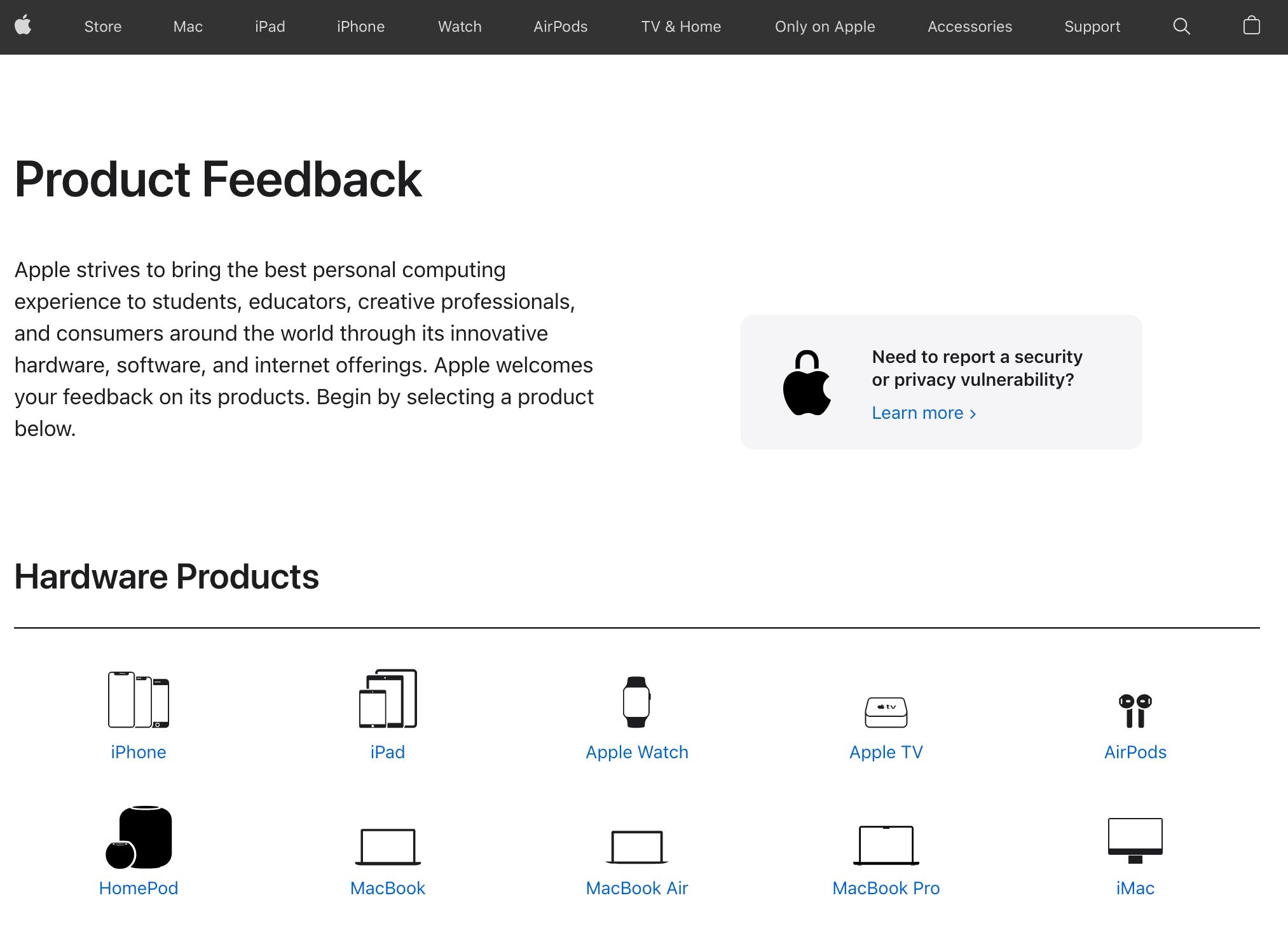
Airbnb - Host and Guest Reviews
- Feedback Gathering: After a stay, hosts and guests are encouraged to leave reviews and feedback about their experience.
- Analysis and Action: Airbnb monitors this feedback to ensure the quality of listings and the safety and satisfaction of guests. Hosts also use feedback to make improvements to their listings and services.
- Communication: Hosts can respond to reviews publicly, addressing issues or thanking guests for feedback. Airbnb also occasionally highlights stories of hosts making significant improvements based on guest feedback in their community feedback forums and communications.
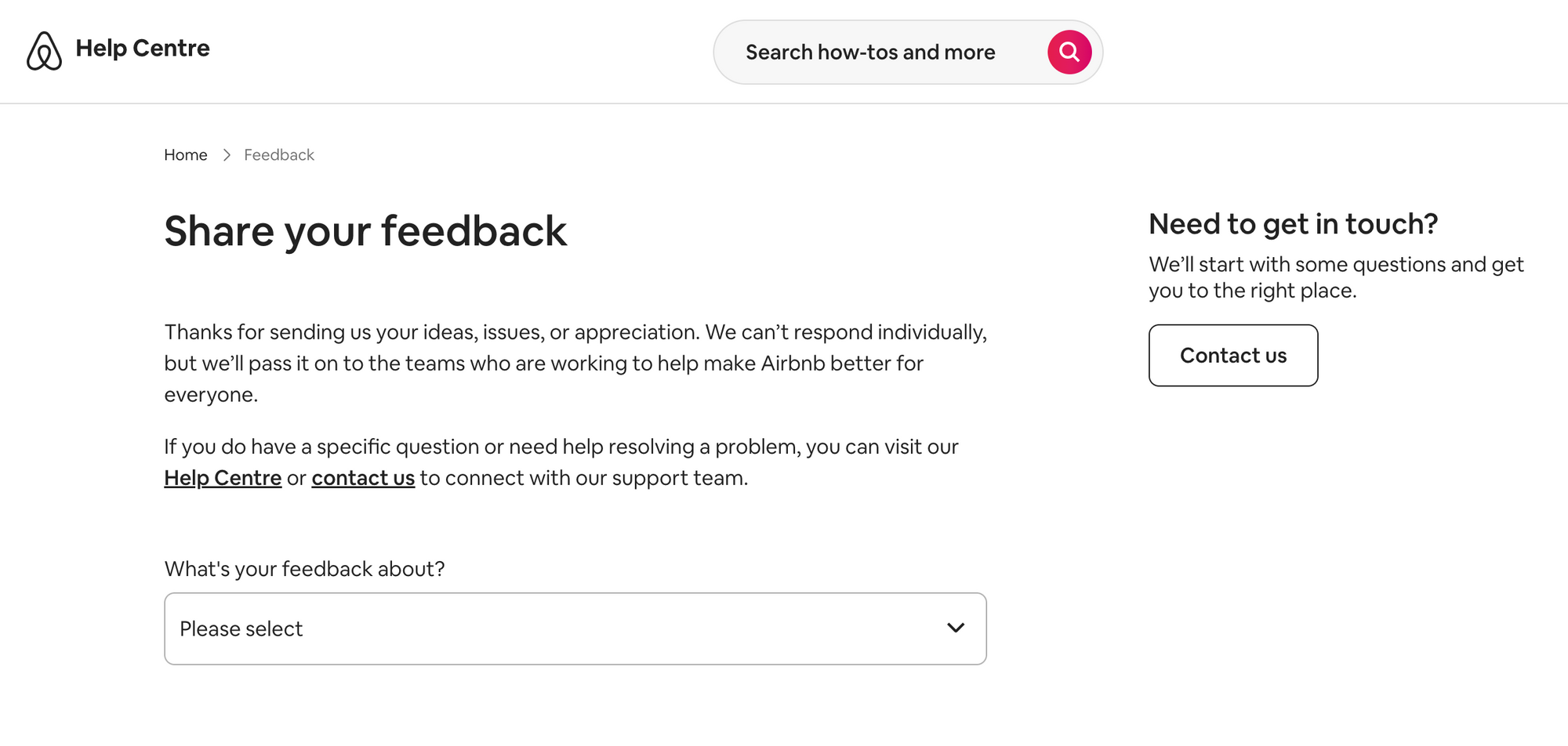
In each case, the companies have created mechanisms to gather feedback, analyze it, and take action to improve their products or services. They communicate back to the customers or users to close the loop. This approach helps improve the customer experience, builds trust, and fosters community and engagement.
How to Close the Customer Feedback Loop: Best Practices
Aggregate and Centralize Customer Feedback
To understand what your users want, you must collect and organize feedback properly from customers and teammates. This isn't easy when feedback is scattered inconsistently across different channels and folders.
Closing a customer feedback loop will most likely take months. You need to keep track of everything in between, like whether any follow-up communications are associated with a piece of feedback. The feedback you collect should be:
- Organized by category of feedback received
- Easily accessible to everyone
- Organized by type of customers using user segments
- Shared across teams internally and types of customers
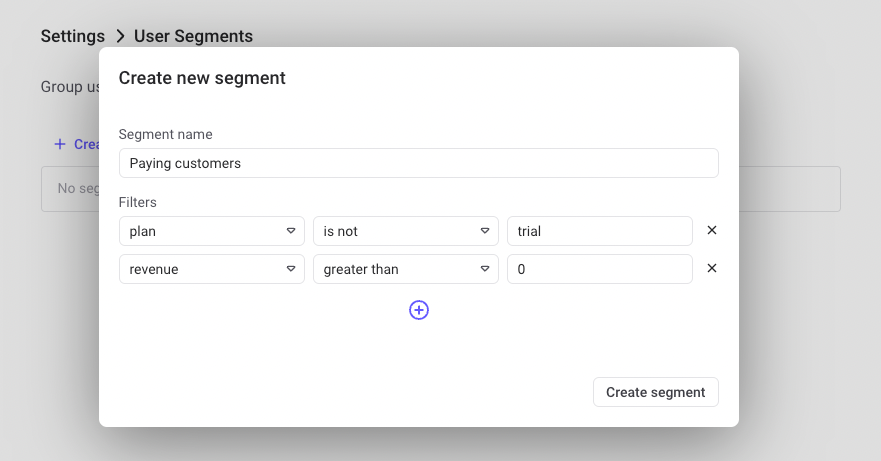
To achieve this, you need a centralized system. Here’s how:
1. Collect on a Spreadsheet/Trello
When collecting feedback with a spreadsheet or Trello board, you can categorize your feedback repository into specific types of customer feedback, feedback sources, and types of customers.
You will need to manually collect every feedback you receive from different sources such as NPS surveys, CSAT ratings, CES (customer effort score) feedback, feedback forms, live chat, social media, and email feedback and add it to the sheet.
2. Automate Feedback Management
If you’re concerned about the time it will take you to collect feedback manually, the best solution is to use a customer feedback tool to automate the process.
What if you could bring feedback from different channels all in one place? This is possible with feedback software like Rapidr. With supported integrations, all feedback from Emails, Spreadsheets, Slack Channels, Hubspot deals, Intercom Inboxes, Slack channels, and surveys will be aggregated in one centralized place.

Analyze and Prioritize customer feedback
Prioritizing product feedback is necessary, as responding to every request is impractical. The first step in product planning is to sort through customer feedback, analyze them according to priority, and find learnings.
Here are some helpful tips for analyzing customer feedback and deriving learnings:
1. Try to identify trends and prioritize
Identify common or similar topics that frequently occur in the feedback. Is a particular product/feature being discussed often? Is it a feature requested by many users? Leverage this information to prioritize features and product improvements. This takes the guesswork out of product planning and prioritization.
It’s always best to prioritize the features that customers want the most. But how do you know this? Rapidr has a feature that allows customers to vote on features. You can then sort with the "most voted feedback."
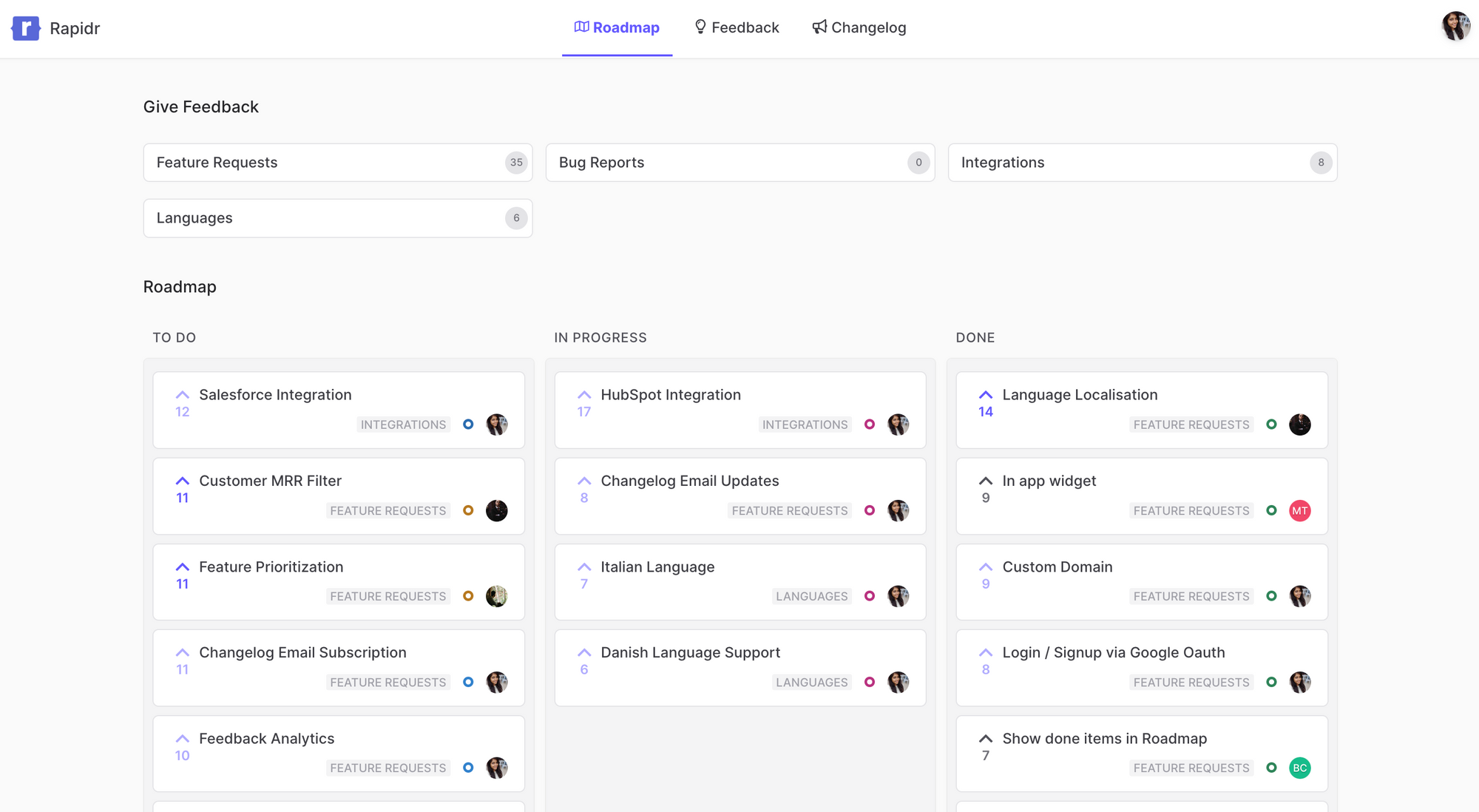
There are many frameworks that you can use to decide whether a product feature is worth building or not. Here’s a detailed guide on feature prioritization.
2. Consider feedback sources
Looking at a single source of feedback is not ideal for obvious reasons, but okay for starting. The most critical feedback sources include:
- Customer Feedback Surveys
- User Interviews
- In-app Feedback
- User Feedback Tools
- Usability Testings
- Focus groups
3. Consider both positive and negative feedback
Analyze positive and negative feedback differently. Firstly, thank the user for positive feedback and ask for more pointers. Also, use this to understand what works and extend such concepts to other parts of the company.
As for negative feedback, acknowledge the customer’s concerns. Offer a solution or a way to fix it. Close the feedback loop once you have resolved the issue.
32% of customers stop doing business with a brand they love after a single bad experience. - Research by PwC
Analyzing feedback before taking action is required to avoid wasting time building the wrong features and saving time closing the suitable feedback loops. You can use various customer feedback tools, including Rapidr, to analyze and prioritize feedback to identify top ideas for improving your product.
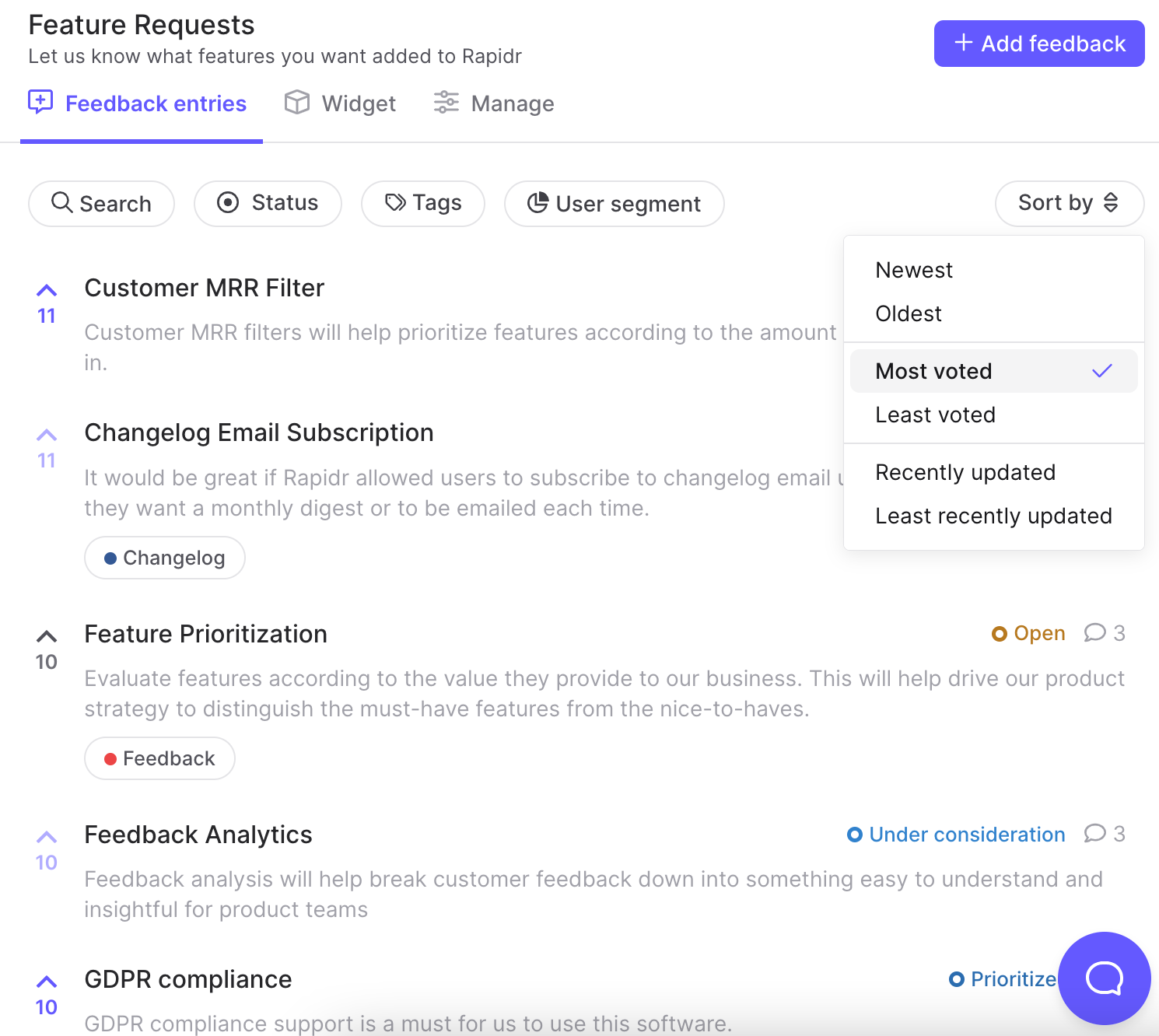
Include various team members in the feedback loop
Customer feedback shouldn’t be limited to the product, customer success, and support team alone. Break down silos. Let marketing, sales, and engineering teams get involved in customer communication.
For example, the information from customer feedback can be helpful to the marketing team in crafting better copy and creating messaging that resonates with the audience. Sales could target better leads with customer feedback, and the product team would be able to make informed product decisions with the knowledge of customer feedback.
Increasing transparency across the company, collecting internal team feedback, and encouraging all teams to make follow-up conversations with the customers helps close the feedback loop effectively.
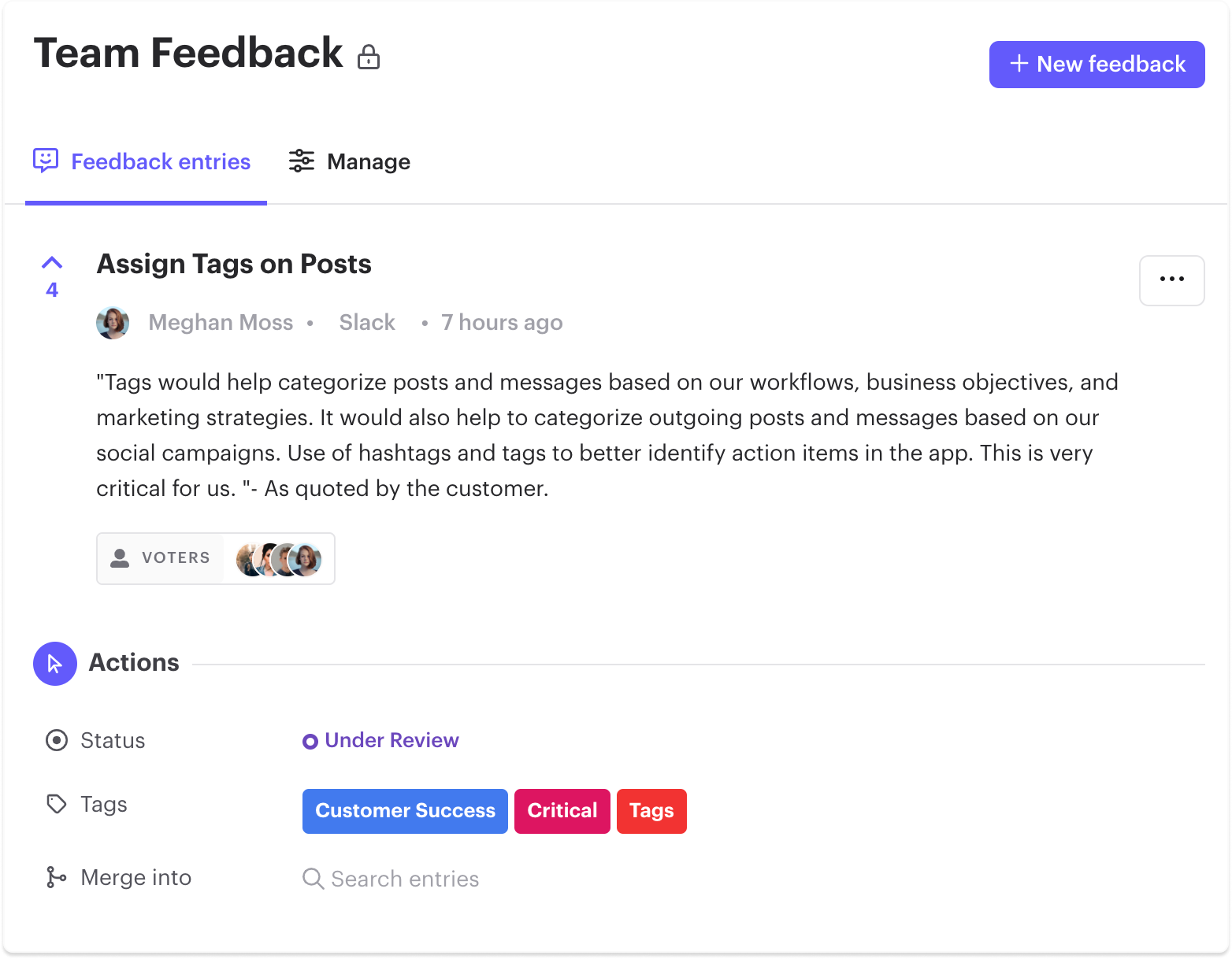
Acknowledge and Respond to Customer Feedback
Before you do anything else, respond to the feedback you have received, even if it is negative feedback.
Different kinds of feedback exist, from product feedback and feature requests to bug reports and complaints. Each feedback needs to be addressed differently and with personalized text.
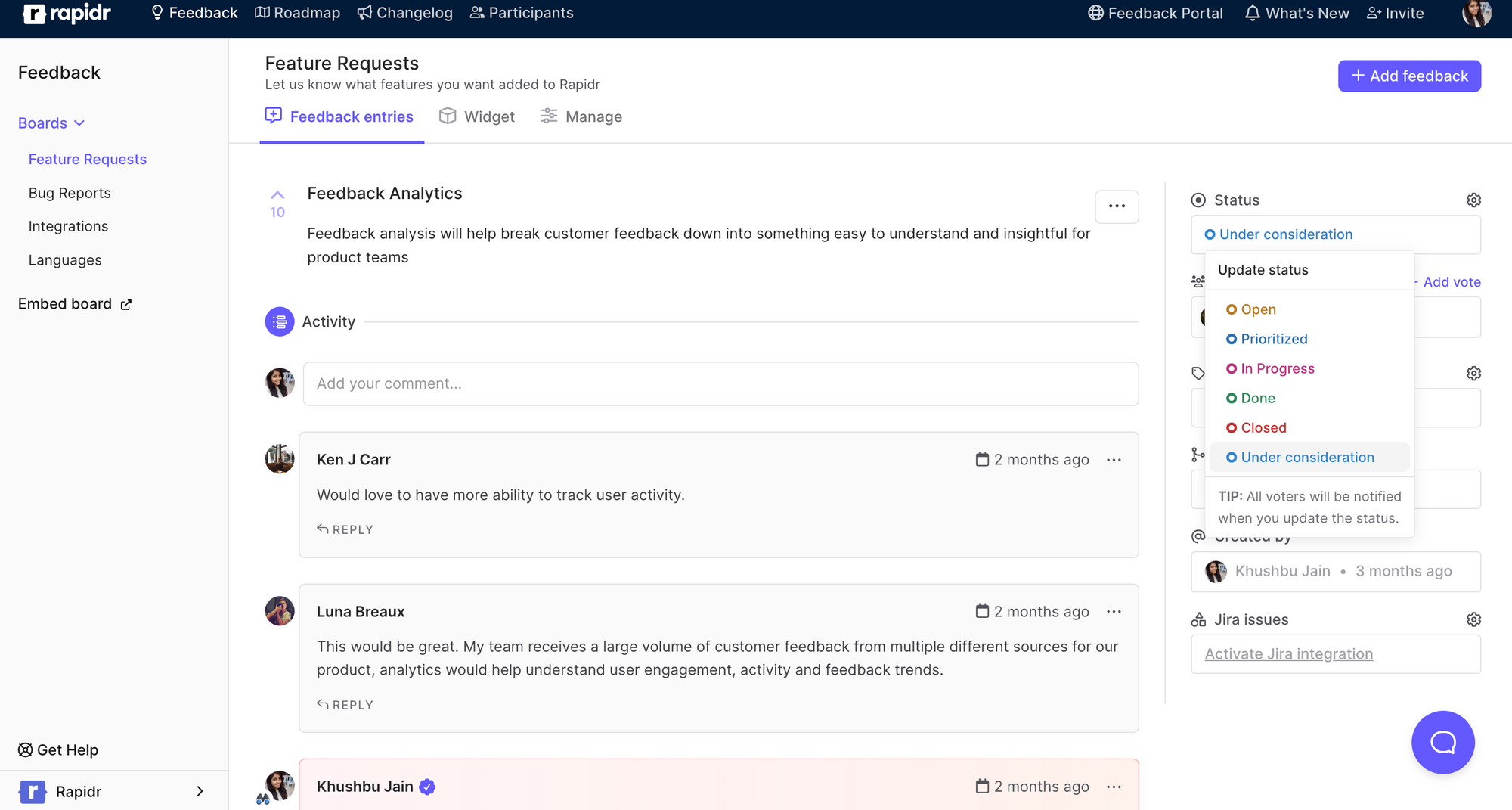
In every case, you must let customers know you have acknowledged the problem and will take the necessary steps. Always leave space for open-ended questions to open another loop as soon as one feedback loop closes.
You can reward them for positive feedback and ratings by offering a discount coupon. For negative feedback and complaints, let them know they are heard, and the complaints will be handled.
Keep customers informed about the progress
Track and review customer feedback and communicate back about the changes made based on their feedback. Not updating customers about their feedback status is one of the most common customer feedback mistakes companies make.
Set customer expectations about time once you have organized and analyzed feedback to improve product features. Only 5 % of companies tell customers they leveraged feedback to improve the product. This is not ideal because the loop is still open: the customer is not informed about the progress.
Responding immediately to the feedback with “we’ll review your feedback” is only the first step. With a product roadmap, you can prioritize features and customer feedback and provide more visibility on your feature prioritization process to keep all stakeholders in the loop.
You need to identify which customer requested the feedback to prioritize feedback better. For this, it’s easier to use a feedback management tool that keeps track of precisely who requested a feature, such as Rapidr.
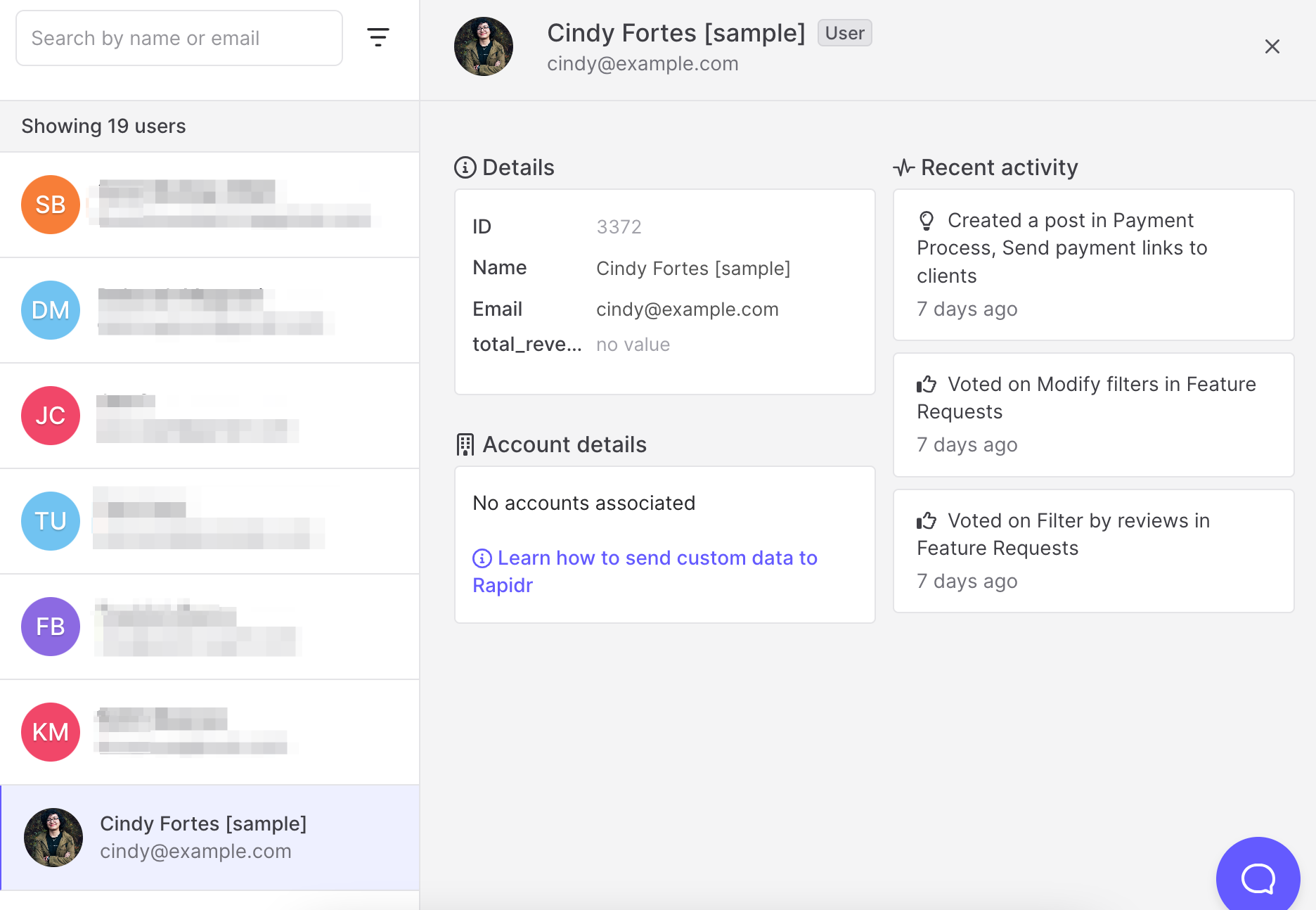
Communicate new features, releases, and announcements
The next step is to get back to them about the progress. And when the feature is finally released, ensure they’re the first to know. Providing follow-up communication to every customer and stakeholder who provided the feedback can be overwhelming. But this shouldn’t keep you from doing it.
It is typical for the marketing team to do new release campaigns to inform your user base about the latest features. Remember that this isn’t necessarily closing the loop. A personalized email or message should be sent to the customer(s) who submitted the feedback.
How do you engage customers throughout the product lifecycle? One way is to use a customer feedback tool like Rapidr, which provides a product changelog to announce product updates and increase feature awareness.
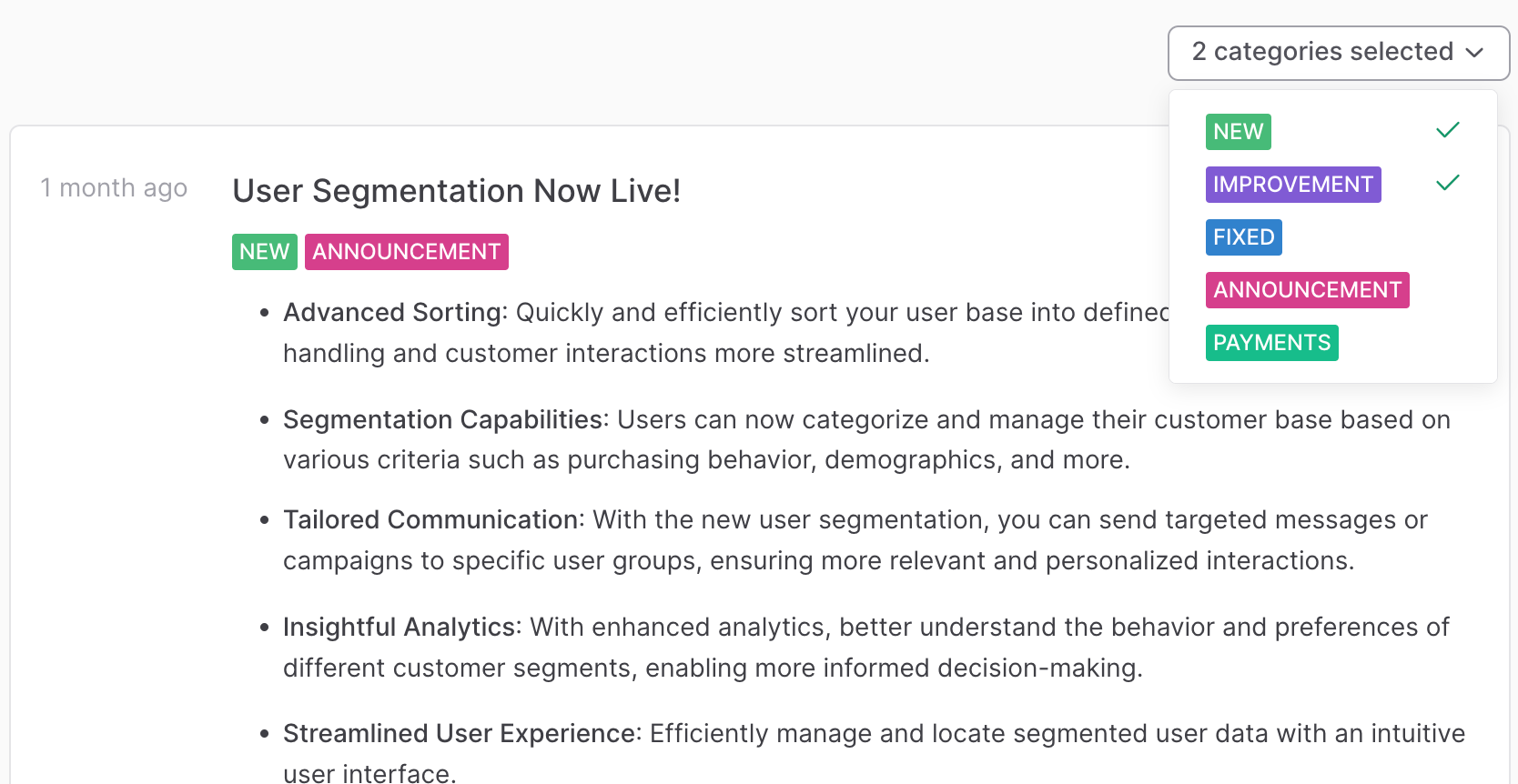
Don’t hesitate to say no
You don’t have to act on every feedback you receive. Of course, you can respond to them, as we discussed before. But not every feature request will be a good fit for your product.
The best thing to do in this situation is not to ignore the feedback. You should communicate the reason why their feedback request is not being prioritized. It is always beneficial to learn how to say no to feature requests.
Customers will understand if you provide valid reasons for not proceeding with their request, listen to customer feedback, and address their pain points. Being transparent about your feature prioritization process to all stakeholders may be your best bet here.
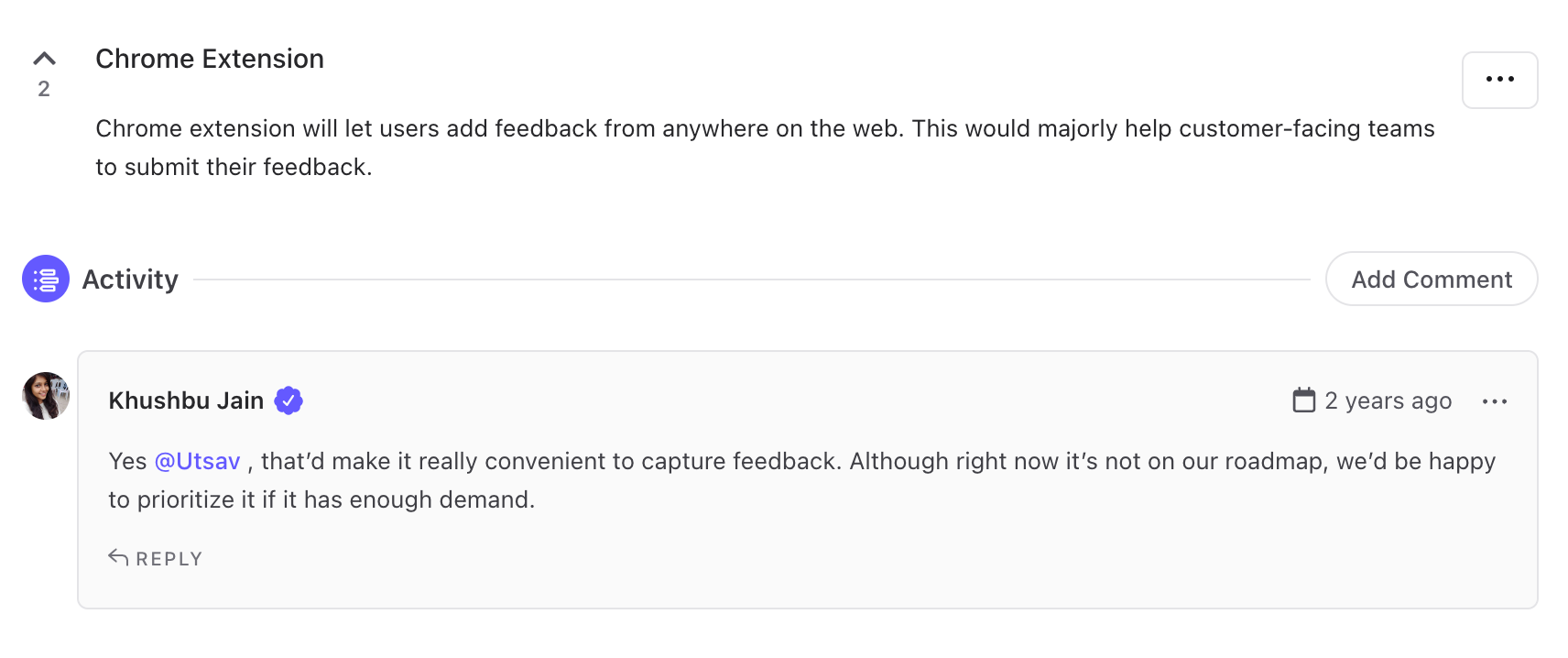
Power of Closing Customer Feedback Loops with Rapidr
Feedback loops should be a constant part of your business to ensure a better customer experience. Consistently collecting, analyzing, and responding to feedback is a significant challenge. So, make sure that you stay consistent at it with the help of customer feedback software.
This will help you automate manual tasks, keep every team member informed and connected, and keep your customers engaged during product development.
With Rapidr, you can collect, analyze, and organize feedback and engage with customers as their feedback moves through the development process. Other notable features include collecting feedback via widgets, slicing and dicing feedback, embedding a roadmap into your product, and closing the feedback loop.
Sign up and set up a complete customer feedback management system to close the feedback loop with Rapidr.
FAQs
What are the types of customer feedback loops?
Positive and Negative Feedback Loops: Feedback loops vary based on feedback.
A negative feedback loop is when you receive customer complaints and negative feedback about your product and use that information to build better features, increase product adoption, and improve customer service. If appropriately leveraged, negative feedback can significantly benefit a company and make the customers feel valued and respected.
On the other hand, a positive feedback loop in business is when a company uses criticisms and complaints from their employees to improve the work environment and work processes. This feedback loop is closed once the employee's complaints are addressed and acted upon. A positive feedback loop enables companies to improve employee retention and the quality of work done, thus increasing profits.
How do you create a customer feedback loop?
The customer feedback loop process consists of five steps:
1. Listen - The first step is listening to what customers say.
2. Act - The second step in the process is for businesses to take action based on what they hear from their customers.
3. Learn - The third step is for businesses to learn from their actions and how they impact customers.
4. Repeat - The fourth step in the customer feedback loop is for businesses to repeat steps 1-3 until they meet their goals.
5. Share - The fifth and final step in the customer feedback loop is for businesses to share what they learned with customers, internal team members, and all stakeholders directly affected by it.

